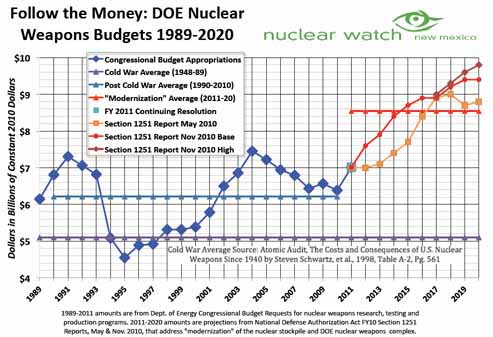2023 News Articles – All Posts
Nothing Found
It seems we can’t find what you’re looking for. Perhaps searching can help.
2022 Select Highlighted Press Items
Nuclear Modernization is the ’Absolute Minimum,’ STRATCOM Commander Says | March 8, 2022
US tested hypersonic missile in mid-March but kept it quiet to avoid escalating tensions with Russia | April 4, 2022
Putin’s Nuclear Threats Are a Wake-Up Call for the World | March 15, 2022
Intelligence report determines that Russia's WMD threats will grow as losses mount in Ukraine | March 19, 2022
China and the United States: It’s a Cold War, but don’t panic | March 10, 2022
Russian military doctrine calls a limited nuclear strike “de-escalation.” Here’s why. | March 8, 2022
North Korea says it will strike with nuclear weapons if South attacks | April 4, 2022
Flying Under The Radar: A Missile Accident in South Asia | April 4, 2022
2022 News Articles
How to Disrupt the Military-Industrial-Congressional Complex
By Robert Reich, Robert Reich’s Blog, July 5, 2015
“Ever since the Supreme Court’s shameful Citizens United decision, big corporations have been funneling large amounts of cash into American politics, often secretly. Bad enough. But when big government contractors do the funneling, American taxpayers foot the bill twice over: We pay their lobbying and campaign expenses. And when those efforts nab another contract, we pay for stuff we often don’t need.”
A case in point is America’s largest contractor- Lockheed Martin. More than 80 percent of Lockheed’s revenues come from the U.S. government, mostly from the Defense Department.
Follow the money behind the money. According to the Center for Responsive Politics,
- Lockheed’s Political Action Committee spent over $4 million on the 2014 election cycle,
and has already donated over $1 million to candidates for 2016. - The top congressional recipient of Lockheed’s largesse is Mac Thornberry (R-Texas),
Chairman of the House Armed Services committee. - Second-highest is Rodney Frelinghuysen (R-New Jersey),
Chairman of the Defense Subcommittee of the House Appropriations Committee. - Third is Kay Granger, the Subcommittee’s Vice-Chair.
- Lockheed also maintains a squadron of Washington lawyers and lobbyists dedicated to
keeping and getting even more federal contracts. The firm spent over $14 million lobbying
Congress last year.
Remarkably, 73 out of Lockheed’s 109 lobbyists are former Pentagon officials, congressional staffers, White House aides, and former members of Congress. You and I and other taxpayers shouldn’t have to pay Lockheed’s lobbying expenses, but these costs are built into the overhead Lockheed charges the government in its federal contracts.
And we shouldn’t foot the bill for Lockheed’s campaign contributions, but these are also covered in the overhead the firm charges- including the salaries of executives expected to donate to Lockheed’s Political Action Committee.
The ten largest federal contractors are all defense contractors, and we’re indirectly paying all of them to lobby Congress and buy off politicians. To state it another way, we’re paying them to hire former government officials to lobby current government officials, and we’re also paying them to bribe current politicians- all in order to keep or get fat government contracts that often turn out to be lousy deals for us.
Now it’s a military-industrial-congressional complex
President Obama is said to be considering an executive order requiring federal contractors to disclose their political spending. He should sign it immediately. But he should go further and ban all political spending by federal contractors that receive more than half their revenues from government. That includes Lockheed and every other big defense contractor.
Robert Reich: “How to Disrupt the Military-Industrial-Congressional Complex”
“Pay-to-play is for real.”- POGO’s General Counsel Scott Amey, in a blog post on Monday.
A report released last year by the Sunlight Foundation detailed how 200 corporations spent a total of $5.8 billion on lobbying and campaign contributions from 2007 to 2012. During the same period, the same companies received $4.4 trillion in federal business and support, the report found. Amey: “In other words, for every $1 the companies spent on political influence and access, they got $760 from the federal government.”
References:
- Lockheed lobbying stats: OpenSecrets.org
- Obama considering executive order on contractor campaign spending: The Hill
- Sunlight Foundation report on contractor lobbying: The Hill
- More on Lockheed lobbying at First Street (2012)
Related:
Regarding the Lockheed F-35 Joint Strike Fighter contract:
In 2001, Lockheed landed the biggest defense contract in history when it was named the main contractor for the Joint Strike Fighter (est. $400 billion). 14 years on, in April of 2015, the GAO reported that:
“The F-35 Joint Strike Fighter program had to make unexpected changes to its development and test plans over the last year, largely in response to a structural failure on a durability test aircraft, an engine failure, and software challenges. At the same time, engine reliability is poor and has a long way to go to meet program goals. With nearly 2 years and 40 percent of developmental testing to go, more technical problems are likely. Addressing new problems and improving engine reliability may require additional design changes and retrofits.”
“An army of lobbyists is great. But an army of insiders who know how to navigate the halls of power, can socialize with politicians on weekends and ultimately play the system like a violin is so much better.”
-From Sheila Krumholz, executive director of the Center for Responsive Politics in “Obama Pledged to Reduce Nuclear Arsenal, Then Came This Weapon”.
Long Range Standoff Bomber Update
Shrouded In Mystery, New Bomber Makes Waves
“The program is targeting a production line of 80-100 planes. It will replace the fleet of B-52 and B-1 bombers. It will be stealthy, capable of carrying nuclear weapons, and optional manning has been discussed. A down-selection will be made this spring or early summer, with initial operating capability planned for the mid-2020s. Nuclear certification will follow two years after that.
The target price, set by former Defense Secretary Robert Gates, is $550 million a copy. To keep the price down, the Air Force is looking to use mature technologies that are available now, rather than launching new developments… ”
Massive Upgrade For B-2 Stealth
Air Force officials have started planning a ten billion dollar modernization of the B-2 stealth bomber fleet to include a new receiver using VLF waveform technology that allows the bomber to receive messages in the event of a high altitude electromagnetic pulse, and outfitting the aircraft for next-generation digital nuclear weapons such as the B-61 Mod 12 with the new tail kit, and Long Range Stand-Off weapons- (air-launched nuclear cruise missiles).
From Military.com
U.S. Nuclear Weapon Plans to Cost $355 Billion Over a Decade
“The Obama administration’s plans for the U.S. nuclear weapons complex, including modernization of bombs, delivery systems, and laboratories, will cost the country about $355 billion over the next decade, nearly $150 billion more than the administration’s $208.5 billion estimates in a report to Congress last year; since the modernization effort is just beginning, costs are expected to greatly increase after 2023.”
See also Are New Nuclear Weapons Affordable?
GAO: Accounting Problems at DoD so Significant that a Federal Audit Cannot be Done.
WASHINGTON (January 17, 2013) – The U.S. Government Accountability Office (GAO) cannot render an opinion on the 2012 consolidated financial statements of the federal government because of widespread material internal control weaknesses, significant uncertainties, and other limitations.
As was the case in 2011, the main obstacles to a GAO opinion on the accrual-based consolidated financial statements were:
Serious financial management problems at the Department of Defense (DOD) that made its financial statements unauditable.
The federal governments inability to adequately account for and reconcile intragovernmental activity and balances between federal agencies.
The federal governments ineffective process for preparing the consolidated financial statements.
Cost Comparison Debunks LANL’s Outrageous Cleanup Estimate
Can it possibly cost $29 billion to clean up 51 acres? (That’s $568.6 million per acre!) The answer is yes if the estimate comes from Los Alamos National Laboratory.
NukeWatch has run cost comparisons between the estimate for Area G and two other excavation projects at the Lab. At six acres, excavation of Materials Disposal Area B is almost complete, so we have hard costs. (It is around $22.7 million per acre.) An evaluation of Materials Disposal Area Cwas released this September. The estimated costs for excavation of the 11.8-acre site came out to be $66.7 million per acre. View the cost comparison
Follow the Money
A chart of Energy Department Weapons Activities Budgets compared to the average spent during the Cold War. Is this the direction we want spending to go for Nuclear Weapons?
Nuclear News Archives – 2021
Nothing Found
It seems we can’t find what you’re looking for. Perhaps searching can help.
Nuclear News Archives – 2020
Nothing Found
It seems we can’t find what you’re looking for. Perhaps searching can help.
Nuclear News Archives – 2019
Nothing Found
It seems we can’t find what you’re looking for. Perhaps searching can help.
Nuclear News Archives – 2018
Nothing Found
It seems we can’t find what you’re looking for. Perhaps searching can help.


